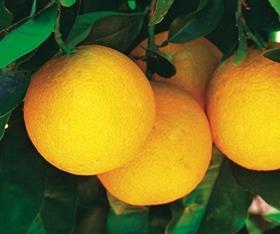
Japan’s long-term issues with declining fresh fruit consumption showed no signs of abating during June, with household expenditure dropping to its lowest level in 11 years, according to government figures.
At ¥2,520 per household, spending was down by 4.7 per cent on June 2010 (¥2,645), and well down on the corresponding month for most years prior to that.
“This means that fruit consumption in Japan is still declining significantly while consumption in general has been sluggish,” said Junichi Moriya, president of major fresh producer importer Tokyo Seika Trading Co, commenting on the figures from the Ministry of Internal Affairs and Communication Statistics Bureau.
Even consumption of bananas, which have been one of the more solid market performers over the past few years, saw a noteable decline. Household spend on the fruit, Japan’s largest fresh fruit import, slumped to a four-year low of ¥408.
The fortunes of grapefruit, which has been suffering an ongoing decline in consumption, continued to fade. Consumption hit its second-lowest level in 11 years at ¥87 per household, down from ¥119 in the same month last year.
Indeed, sales of grapefruit were overtaken by oranges, which reached an 11-year high at ¥98 per household. Orange consumption on a volume basis actually reached a record high for the month of June of 0.32kg per household.
The consumer shift from grapefruit to oranges is also confirmed by key market sources. Hisao Takeda of Japanese agricultural marketing consultancy Yamano & Associates explained that grapefruit sales were falling victim to consumer trends towards sweeter fruits, which has conversely benefited oranges.
“Oranges have been enjoying an increase in consumption thanks to their higher brix levels and the ease of peeling and preparing then,” Mr Takeda told Fruitnet.com.
Kiwifruit was the other star performer in June, with household spending on the fruit reaching a seven-year high of ¥172. That figure was on a similar level to 2009 and 2010 (¥170 per household), and consumption volume also reached a seven-year high of 232g per household. However, the average selling price of the fruit slumped to its lowest level in seven years at ¥739 per kg, down from ¥765 in 2010. “Consumption of kiwifruit has bucked the trend of slow consumption seen by other fruits,” said Mr Moriya.
In general, fruit and vegetable prices in Japan have been higher in recent months as domestic supplies have fallen due to weather setbacks, according to Mr Takeda.
Japan also registered a solid performance on imports of California cherries this year, he added, despite the struggling economy and the shorter crop. “The California cherry crop was down by almost 30 per cent this season, but Japan still imported around 900,000 cartons. This was only 10 per cent down on last season’s imports and accounted for a significant percentage of the overall crop,” Mr Takeda pointed out.
While cherry import supplies have switched over to the Pacific Northwest, he noted that competition from domestic cherries was strong. “The domestic cherry crop is good this season and the supermarkets have been promoting them a lot,” he observed.



